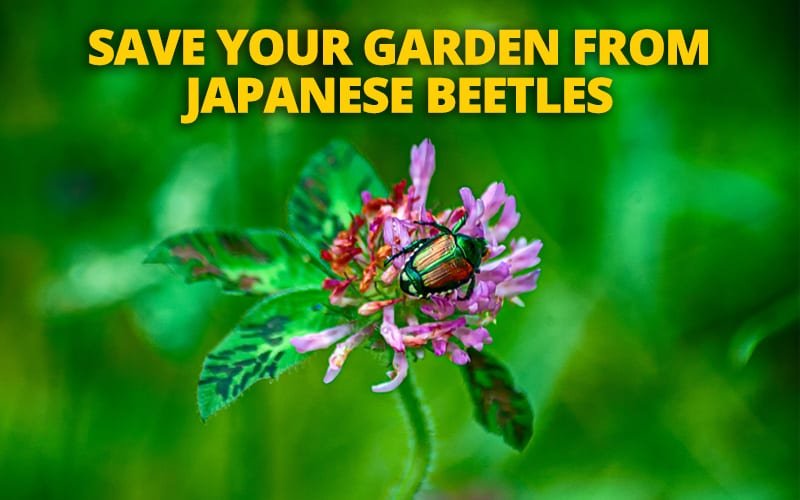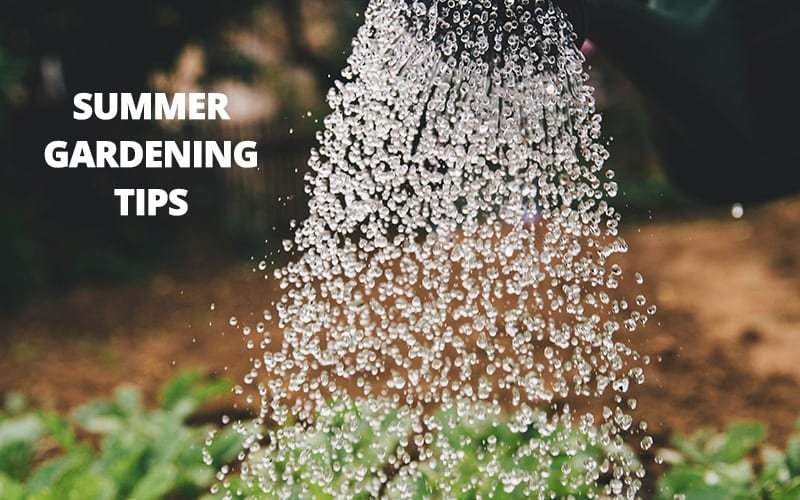
Oct 19, 2021 | Blog, Gardening Tips
Some homeowners don’t realize how critical it is to have a beautiful lawn and exterior home; in fact, a lot of the resale value in the seller’s market comes from having a meticulously intricate front and backyard. Why? Because the outdoors is the first thing that buyers see, and if they see something they like, they’ll be more obliged to enter the home, go for a tour, and potentially put in an offer. It’s kind of like curb appeal, but with landscaping.
Because of this, we chose to pick a few cool outdoor upgrades to talk about in the next few paragraphs, to give all prospective home sellers update ideas. Don’t worry, we’re not telling you to take all of these ideas and apply them to your lawn or outdoor areas – but we do like to give a range of options to choose from. See what fits your house best and go from there.
Let’s see what we got!
Fire Pit
Think about the summer and fall nights you could have with a fire pit. S’mores by the fire, late night conversations with comfy hoodies on and blankets draped over your legs. Sounds like great memories can be made in these two seasons with a backyard fire pit handy, doesn’t it? Seriously, who doesn’t like graham crackers, marshmallows, and delectable chocolate?
What’s more is that this upgrade has a return value of more than 60%, so it’s kind of a no-brainer to install one when you save up enough money.
Lawn Care System
The climate around your home and the amount of rain your lawn gets is crucial to keeping up with good landscaping. If you don’t have good temperatures and the rain is lacking, your lawn may dry out. If the opposite happens, your lawn may potentially sink in. You need a happy medium for it to truly prosper.
Implementing a lawn care system will almost automatically give your outdoor landscape areas a thriving environment. Just make sure it gets the nutrients it needs and the medication to reduce weeds.
The pros recommend applying fertilizer six times per year, along with weed control systems.
Clean Landscape
If the landscape is beautiful and clean, it’s a great selling point. Plus, a tidy lawn gives you over 80% on your return investment.
To do this upgrade properly, we suggest installing a gorgeous walkway – we think stepping stones, brick, or a nice wood slice look truly magnificent. Adding intricate planters, perfecting the mulch placement, getting complimentary flowers, and planting a focal tree are only bonuses.
Backyard Patio
Installing a backyard patio definitely expands the outdoor living quarters, giving you the opportunity to make many backyard memories. It also increases home value upwards of 60%.
Get a nice table with chairs, plant a grill in the corner, raise some umbrellas, and maybe get a few more planters for aesthetics. Other ideas are welcomed. If you’re feeling fun and adventurous, install an outdoor movie theater near the patio with a large projector so everyone can see the movie or show that’s being played. Grab some drinks and snacks and get the backyard party rolling!
Sprinkler System
If you can get a buried sprinkler system, that’s your best call – especially when avoiding trips and falls in the yard. Though they may not happen often, there is potential for an oopsie-daisy.
Pricey? A bit. It’s true, these systems will run you a few grand, but they’ll also freshen up your lawn and save you money on water in the long run. It’s worth the initial cost.

Sep 21, 2020 | Blog
As sad as it is to say goodbye to summer each year, it is just as exciting to say hello to the fall and all the glorious transformations and colors that autumn brings to Colorado. Many people believe that gardening season is over in September, but in some ways, gardening in the fall can be even more rewarding. There are many more opportunities during this time, to add fall foliage colors, utilizing suitable flowers, succulents, shrubs and small trees that thrive even when temperatures drop and the plants stop growing.
One way to spruce up your existing garden or add color to your patio, is to design various containers. There are quite a few considerations to keep in mind when potting for the fall in Colorado.
Container Types
There are many different types of containers to choose from, including clay (terra cotta), wood barrels, fiberglass planters, iron pots, planter boxes, wire baskets lined with coconut coir or sphagnum moss, colorful ceramic pots or plastic containers. Prior to choosing a container, you should determine the space where the containers will be placed for the season. Hardscape elements will stand out more prominently in your landscape because many of your existing plants will have lost their leaves in the fall. Therefore, the plants and container you choose, should compliment or match these elements such as your walkways and railings.
An additional consideration when selecting your containers would be the color of plants within a container as well as the color among the group of containers themselves. You might have color theme in mind. For example, variegated foliage can help complete a colorful container or you might have a group of different color containers in order to achieve your desired design.
Finally, when choosing your container, be sure to consider the drainage. It is difficult to grow plants successfully in soil that is continually water logged. If the container has no existing drainage holes, you should create your own drainage holes at the bottom using a drill or use a lightweight pot with drainage holes as an insert into a more decorative pot that does not have drainage holes.. Wood and clay containers are more pourous and lose moisture quickly, but are much better at allowing air to move through the root zone. You would need to water more often using the more pourous containers. You might consider spraying these with a sealant in order to protect them from the winter elements if you do not move them inside for the winter.
Container Weight and Size
Remember that when adding water to soil in a heave container, may make it too difficult to lift, so you need to plan ahead when planting large containers. You may want to consider adding them to container dollies with wheels unless you have no intention of moving them during the season. Tall plants would require a heavier container, in order to avoid tipping over.
If you would like to reduce the maintenance on your plants, try using a slightly larger container for your flowers, vegetables and herbs as the smaller the container, the less moisture they will hold, especially when the roots are crowded. We recommend 5 gallon containers for plant vegetables such as tomatoes, cabbage, cucumbers, peppers, egglant, and beans. For carrots, lettuce, beets and green onions, a 3-gallon container should work well. Most herbs grow well in containers of 1-gallon or less.
Types of Plants for the Fall
There are many plants that will thrive in the Colorado Autumn months including New Zealand flaxes, Bergenias, Pansies, Violas, Dogwood, Heuchera, Sawara Cypress, Heleniums, Heliopsis, Dusty Miller, Autumn Clematis, just to name a few. Try parsely, rosemary, basil, thyme, mint, dill for some herb gardening. You can add some annual containers for color during the fall and simply use them as compost at the end of their life.
Plants that hardy to two zones colder than yours can be left in the container through the winter months. Remember that you do not need to water as often in the fall and you should stop applying liquid fertilizer to your outdoor containers during this season as it could encourage new growth that won’t withstand the dropping temperatures. Once the soild freezes causing the roots to go dormant, you can stop watering.
Bottom line… Don’t retire your gardening tools just yet and allow your new fall blooms to make an appearance outside your h ome this year! For more information about fall gardening or for help with planning your fall landscaping, please contact us.

Aug 20, 2020 | Blog, Gardening Tips
Japanese beetles have become a bit of an issue this summer in Colorado. They are quick to breed and have the power to destroy your garden at the blink of an eye. There are very few garden pests that can match the destructive powers of the Japanese beetle. When they are immature (or grubs), they feast on grass roots and leave behind brown, dying lawns. When they have matured, they begin feasting on leaves and flowers, leaving your plants weak and skeleton-like. They are known to feast on over 300 species of plants, impacting everything from home gardens to agricultural crops. Let Bloem Landscaping help you fight off Japanese beetles.
About Japanese Beetles:
Originally from Japan, as the name suggests, Japanese beetles first made it to the US in 1916. Since their Japanese native predators are not found on US soil, it is difficult to keep their growing numbers in check. They are currently the Country’s most widespread turf-grass pests, found in over 70% of the U.S.
Japanese beetles are approximately 1/2 inch long with shiny, bronze wings and metallic green bodies and tufts of white, dot-like tufts of hair along their rear and sides.. They usually start to appear in late spring to midsummer when first emerging from the ground and then flying to nearby areas where they tend to target stressed plants. They live thirty to forty-five days where they do most of their damage above ground. Female beetles tunnel a few inches into the ground in healthy, sunny, well maintained lawns, during a 2-3 week period and each can lay up to 60 eggs.
Japanese Beetle Damage:
The beetle eggs hatch during midsummer and the grubs stay close to the soil’s surface to feed on the grass roots. As the grubs mature into the final stages of semi-transparent larvae, the damage to your lawn has been done and you will see random patches of brown dry lawn and peeled back turf rolls.
As the temperatures drop in the fall and winter, the grubs move deeper into the soil and when Spring arrives again, they move back toward the surfaceto continue feeding.. Mature beetles emerge a few weeks later and the cycle starts all over again.
How to Fight Off Japanese Beetles and Grubs
Proper treatment and timing can help you fight off these pests successfully. Now is the time (mid-late summer) when you should focus your attention on the grubs. Studies have shown that neem oil (“antifeedant”), can help deter the grubs from feeding and can also harm them if they eat it. If they do injest it, it can be passed down to the eggs, which in turn will prevent the eggs from hatching.
Because Japanese beetles love hot sunny days, it is best to prepare your garden for these especially hot days ahead of time by adding some shade to your garden. Consider adding row covers to protect your plants during the six to eight week feeding period that begins in the late Spring and early Summer. Don’t uses these if your crops require pollination, however.
As soon as you see one beetle, you can be sure there are others. If you see signs of leaf skeletonization, it is a clue that your garden is infested and it is time to take action in trying to get rid of them. You can hand pick them off your plants and place them in a solution of 1 TB liquid dishwashing detergent and water (which will drown them). Or, you can call Bloem Landscaping for help at 303-733-3793!
Consider planting Japanese beetle deterring plants such as Dogwood trees, Poppies, Chrysanthemums, Begonias, Pansies and/or Lilac trees.
For more information about Japanese Beetles, visit https://en.wikipedia.org/wiki/Japanese_beetle , https://www.almanac.com/pest/japanese-beetles or https://howigetridof.com/how-to-get-rid-of-japanese-beetles/
If you have any questions about protecting your garden from these pesky little beetles, or if you would like us to help you with your garden in any way, please contact Bloem Landscaping here.

Jul 16, 2020 | Blog, Gardening Tips
In Colorado, and especially the front-range it gets pretty hot in the summer with temperatures sometimes reaching 95°F and above with very little cloud coverage on most days. If you are not careful, your plants and trees can develop diseases or exacerbate mites or aphids and / or they can become stressed. All these scenarios could ultimately hurt or even destroy your garden. If you have have an established garden already or if you are planning a new garden with seasonal plants that do not like or love the heat, then the following tips can help you maintain a healthy and productive garden even through the hottest days, weeks and months.
Watering Recommendations:
For summer months, be sure that you change the seasonal sprinkler adjustment to at least 100%. We will remind you in the fall, when it is safe to drop it back down. Make sure that your sprinkler system is set up to create even moisture across your garden.
Mulching
Cover your garden with a thick mulch in order to protect from the sun and retain moisture and nutrients. Try mulching in the winter as well, in order to help protect against frost and the harsh cold. It is considered an insulator, retaining heat when it is cold, and staying cool when it’s hot. Try making your own mulch if you have the time. You can use rock, gravel, pebbles or other stones, rubber, leaves, grass clippings, pine needles, cardboard and/or newspaper or hay and straw as alternatives to the classic store-bought wood chips.
Weeding
It is important for you to remember to weed your garden. The benefits of weeding are twofold: a) it eliminates the competition for the moisture and nutrients that your flowers and vegetables really need during the hottest days of the year and b) It simply looks much nicer.
Providing Appropriate Shade
If your garden lacks natural shade from buildings, trees and bushes or other structures, you can get creative in order to shade your flowers, vegetables and other plants. Your shade element(s) should be a light color in order to reflect the sunlight (not absorb it) and should be placed 3 to 4 feet (or more) from the plants in order to allow for proper airflow. You can use sheets, window screens, other types of light cloth, or even plant some sunflowers. Check out this informative article on the types of shade you can provide at Easy Shade Garden.
If you have any questions about protecting your garden from extreme summer heat, or if you would like us to help you with your garden, please contact Bloem Landscaping here. Happy Planting!

Jun 12, 2020 | Blog
Water Conservation:
It is important to know when to water and how much water to use for your garden. Only 2% of the water in the US is fresh water and we all need to participate in conserving water if we want to be able to have it available to us. Here are some recommendations that can help you:
- Only water in the early morning or late evening in order to avoid evaporation during the hottest hours of the day.
- Use drip irrigation (in-ground water hose), whenever possible in order to deliver the water directly to the roots.
- Use water-holding polymer gel when planting perennials. You could avoid watering as often when using these water holding crystals.
- In order to keep the soil cool and moist, add 1-3 inches of mulch to your garden.
- Plant drought-tolerant plants along with native plants and trees.
Stay Cool in Your Yard:
Trees and bushes can help cool your yard naturally and can also help your gardening efforts when planting foliage that grows better in shade or part-shade. The following are some suggestions that can assist:
- Plant new trees around your deck or patio.
- Move your patio furniture under existing trees.
- Build an arbor and plant quick-growing vines at the base or alternatively, install a shade cloth to help protect your plants from the hot sun.
- Place or install a water feature, portable or permanent, like a pool, pond or fountain, that can provide a cooling evaporation effect.
Keep Your Garden Fresh
- Replace your tired looking plants and flowers with new ones.
- Move furniture and containers around for an updated look.
- Cut back trailing annuals like million bells and/or petunias by half increase the water-soluble bloom booster fertilizer for a new flush of color in the summer.
- Add herbs and vegetables to containers to mix it up a bit.
- Tackle your updates or big garden projects while the weather is good, and please contact us if you need assistance or just some inspirational ideas.











